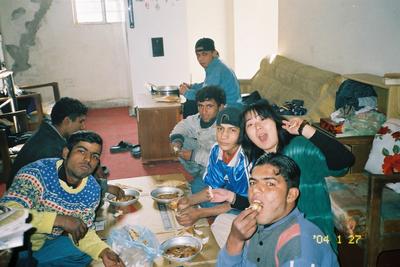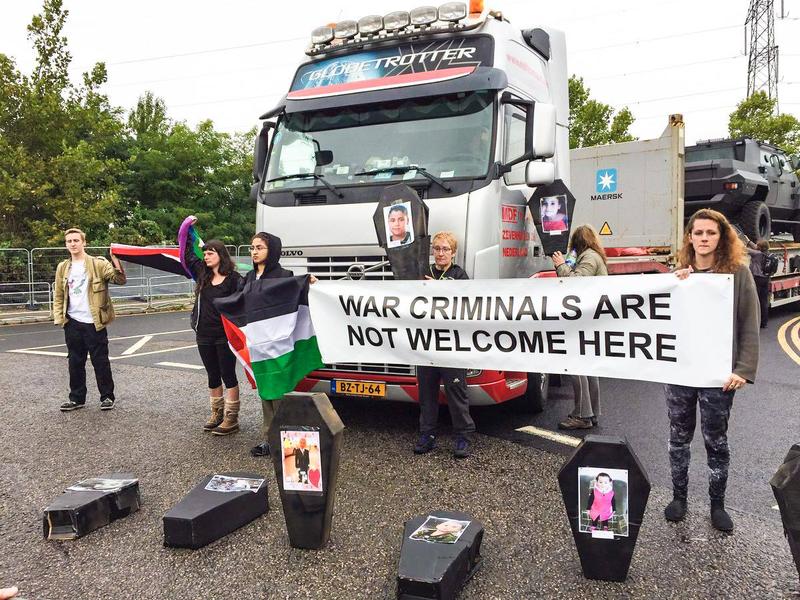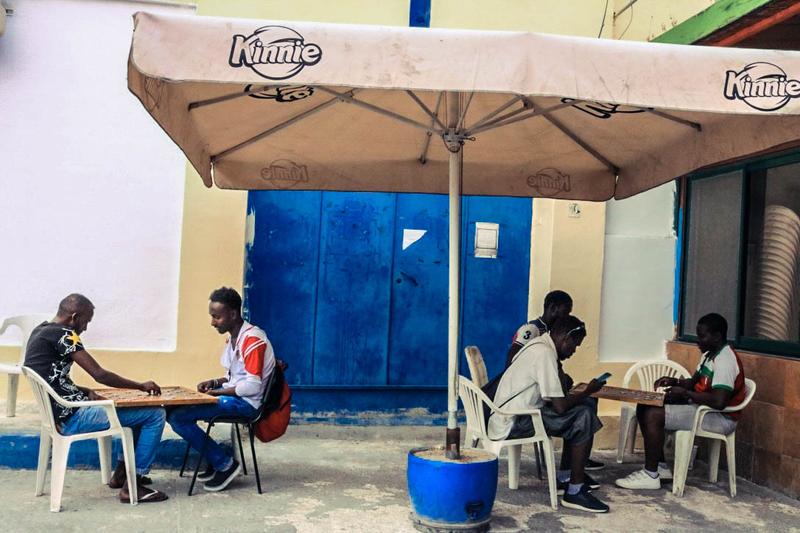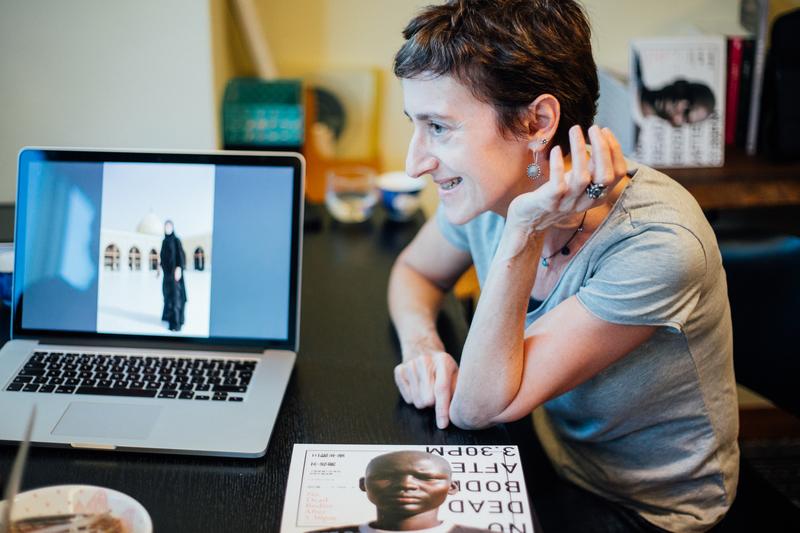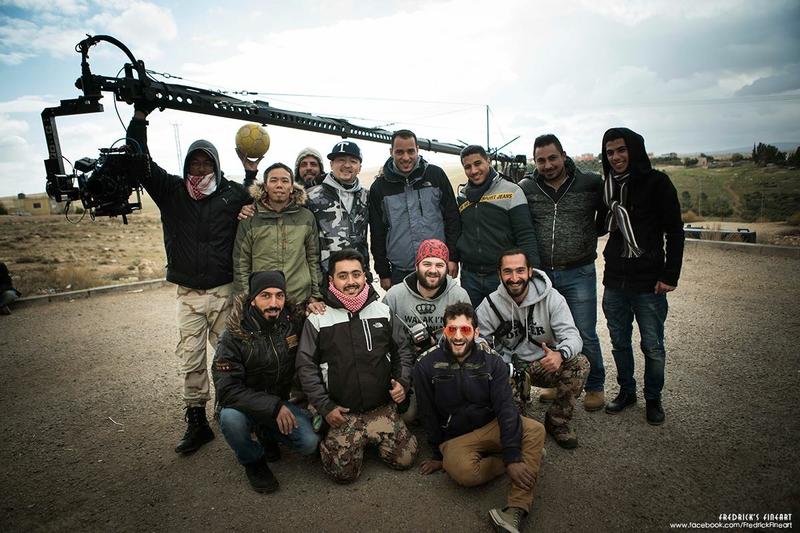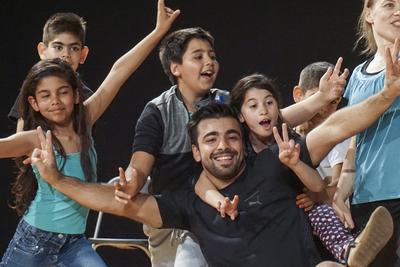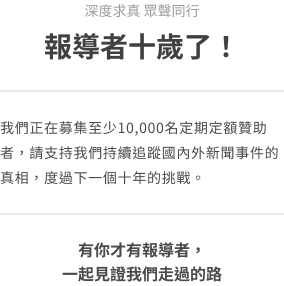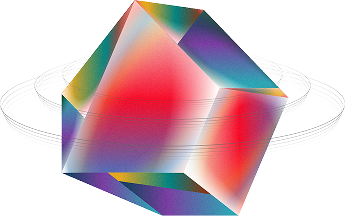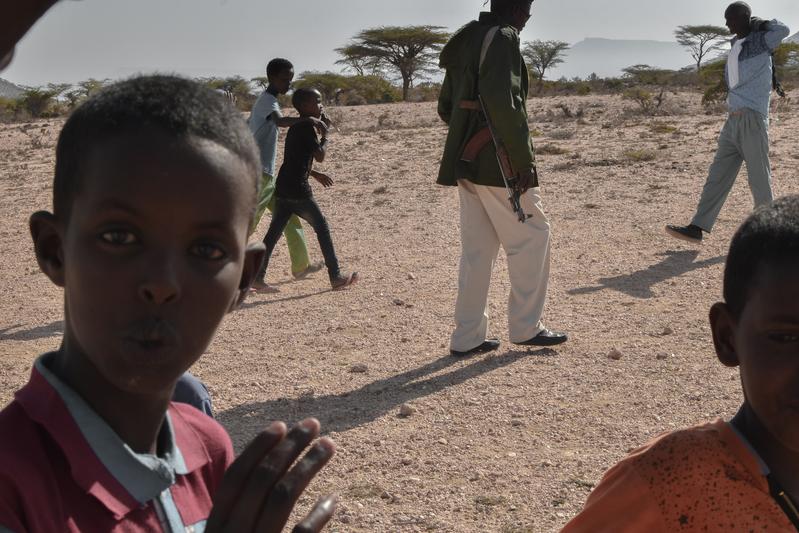
同在中東地區,敘利亞內戰和難民引起國際關注,但2015年起仍未停止的葉門內戰與難民動向,相對卻很少被提及。旅居台灣的德國自由攝影師Christian van Laak前往葉門難民逃難地點之一的索馬利蘭,帶回第一手訪談和影像(編按:本篇文字將以中英雙版本呈現)。
自2011年以來,數十萬人在中東的武裝衝突中喪生。當地政府與正規軍隊、國際勢力、反叛團體,以及伊斯蘭國和蓋達組織等恐怖組織間的武裝衝突,造成數百萬人流離失所。大大小小的衝突影響了戰區平民的命運,湧入歐洲的敘利亞難民改變了歐洲的政治情勢,引起世人關注。
雖然敘利亞被世界視為重大的當代悲劇,但發生在葉門的戰爭卻沒有受到太多關注。自2014年戰爭開始以來,葉門難民無處可逃,也沒有受到注意。這個國家緊鄰沙烏地阿拉伯,位處世界上最惡劣的沙漠地帶。而沙烏地阿拉伯更是直接地參與了武裝衝突。當地的蓋達組織和伊斯蘭國,使得葉門難民幾乎不可能安全地經由陸路離開。
2014年,來自葉門北部的胡塞(Houthis)反抗軍開始在全國各個城市起義。他們很快就擊敗了哈迪政府(Adbrabbuh Mansur Hadi),並控制了主要城市和地區。他們的勢力範圍主要在葉門北部,而舊政府控制了南部,並藉助沙烏地阿拉伯帶領的外國聯盟的空襲,開始反擊胡塞反抗軍。直到2018年,戰爭仍處於僵局,而且沙烏地阿拉伯、美國與伊朗等眾多外國勢力,或多或少都正式參與了這場戰爭。
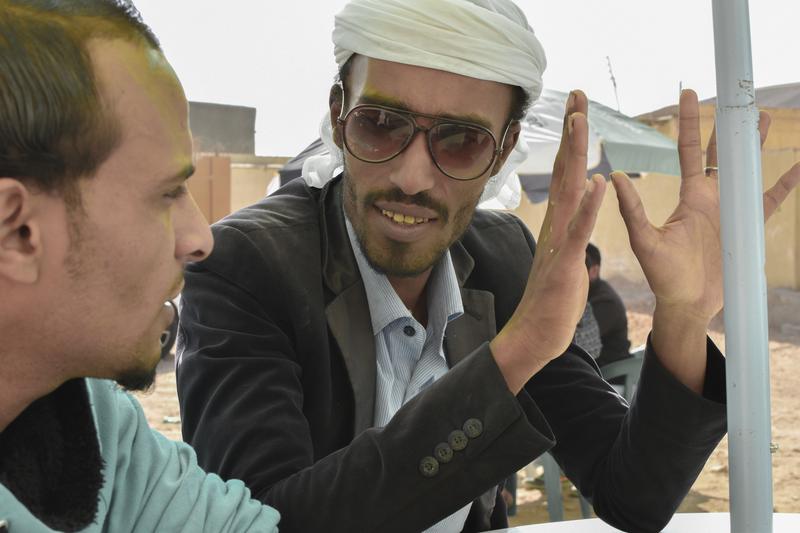
何薩姆:2015年4月,我們乘船抵達索馬利蘭的柏培拉市。我們再也受不了沙烏地阿拉伯的空襲了。整個葉門都陷入混亂的戰爭,我們只得搬到次好的地方。
穆罕默德:有少數航班能出境,但機票價格是天文數字。我不得不從穆卡拉市搭船離開。從我的家鄉塔伊茲出發,途中不得不經過許多胡塞的軍事檢查站。整個國家都動盪不安,局勢緊張。
在葉門和索馬利蘭之間的水域進行小規模航運的,主要是印度和巴基斯坦籍的商人。印度洋,或是紅海的這個區域,仍存在惡名昭彰的海盜,他們主要的目標是小型且無防衛能力的船隻。選擇踏上這條路線,需要勇氣。
何薩姆:我們上了一條小船。我、妻子和我們的3個孩子,我們身處第一批370名的葉門難民之中。直到今天,還有一些非常小的船隻,從柏培拉把牲口運送到亞丁和摩卡,難民們搭乘的正是這些船隻返航的空船。這些船隻不是用來載送乘客的。
何薩姆的全家人都和他在一起,但穆罕默德的家人還留在葉門的塔伊茲市,這個城市曾經歷激烈的戰爭。他們離開這個國家的機會很渺茫。若要離開葉門,必須先經過一段危險的旅程前往港口,接著能否搭上船則取決於貿易貨物的數量,因為難民大多搭乘運送牲口的商船離開。當我短暫停留於柏培拉港時,發現與葉門的交易活動很少,而且船隻只前往亞丁,但葉門人卻無法抵達這個處於戰爭前線的城市。在海洋的另一邊,索馬利亞的魚商正在等待他們自己的船進港。
穆罕默德:我無法聯繫到我的家人。我偶爾通過Facebook與一些朋友保持聯繫,但無法連絡上家人。我打家裡的電話,總是聽到線路已關閉的訊息。
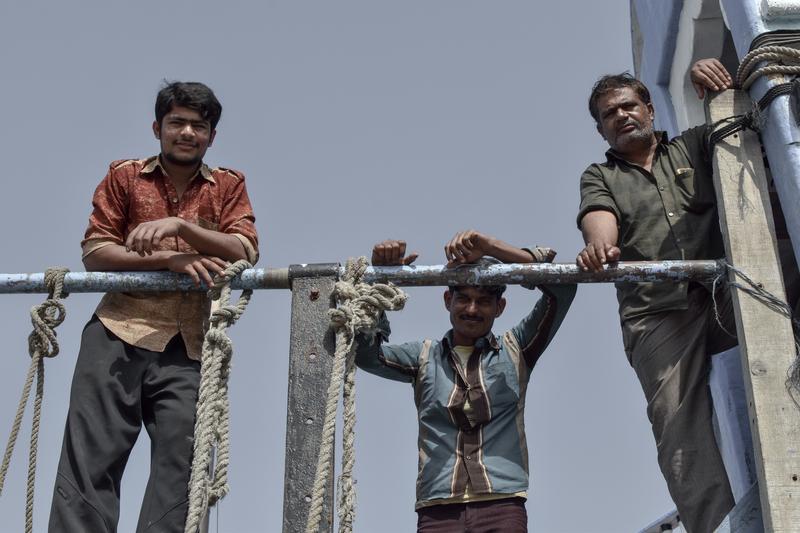
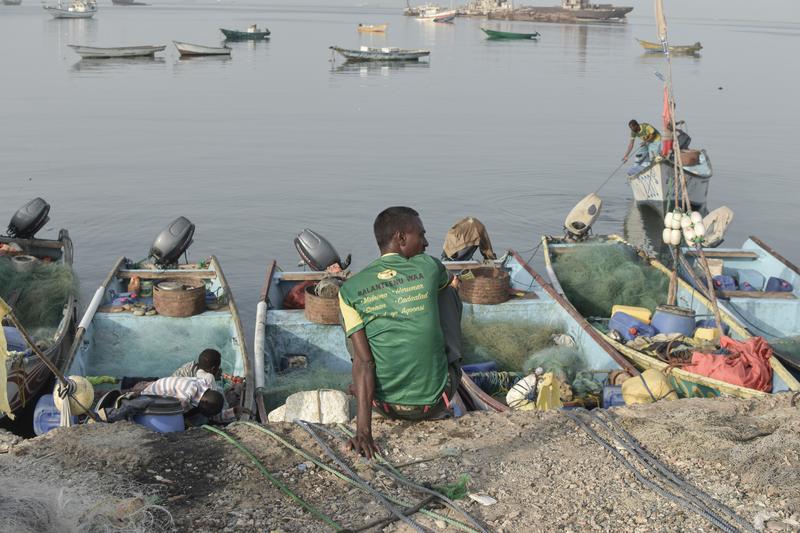
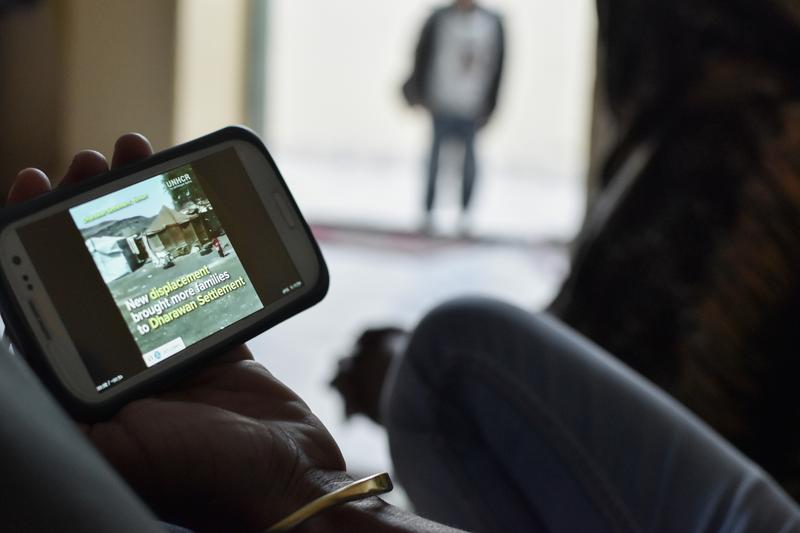
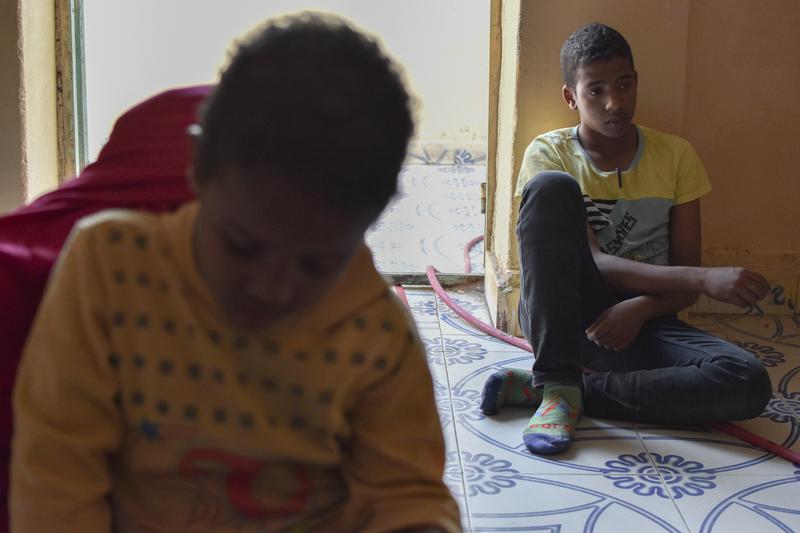
出於許多原因,在索馬利蘭的葉門人處境令人絕望。戰爭在他們身上,特別是孩子身上,留下了精神創傷,索馬利蘭為他們帶來了些許緩解。
何薩姆:我們最初沒有從聯合國難民事務高級專員辦事處(或稱聯合國難民署,UNHCR)得到任何幫助。沒有住處、沒有難民營或難民中心。除了在一段有限的時間內,他們向一些人發放不超過50美元的捐款外,沒有提供任何援助。
穆罕默德:我需要上大學,需要有人幫我與家人取得聯絡。就這樣。我的很多朋友都遭受監禁與折磨,我很幸運能夠逃脫。
儘管索馬利蘭的大多數葉門人都找到了庇護所,但長期停留在索馬利蘭並不是許多人的選擇。但話說回來,對於難民家庭而言,例如帶著3個孩子的艾爾-艾克蘭尼斯(Al-Aklanis)一家,進一步前往非洲不但危險而且花費高昂。
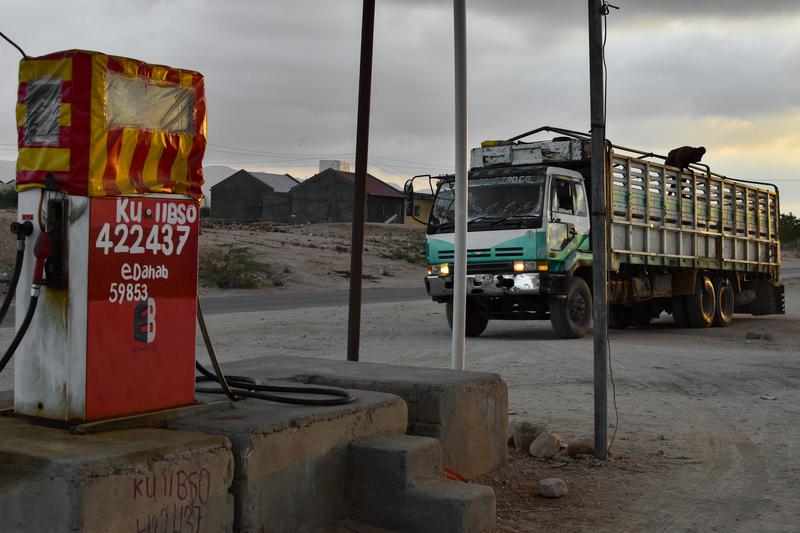
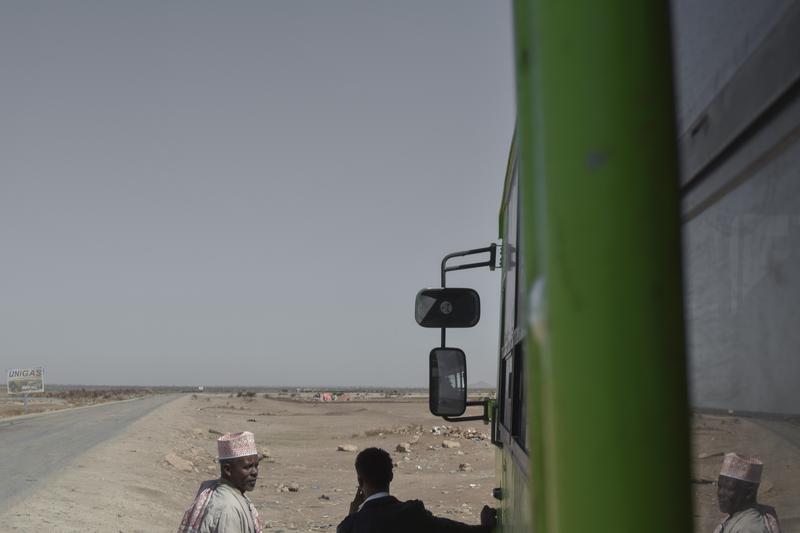
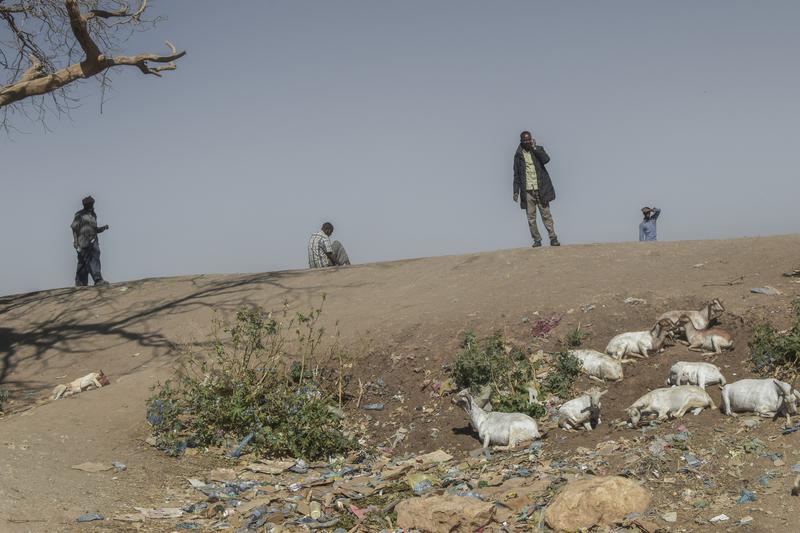
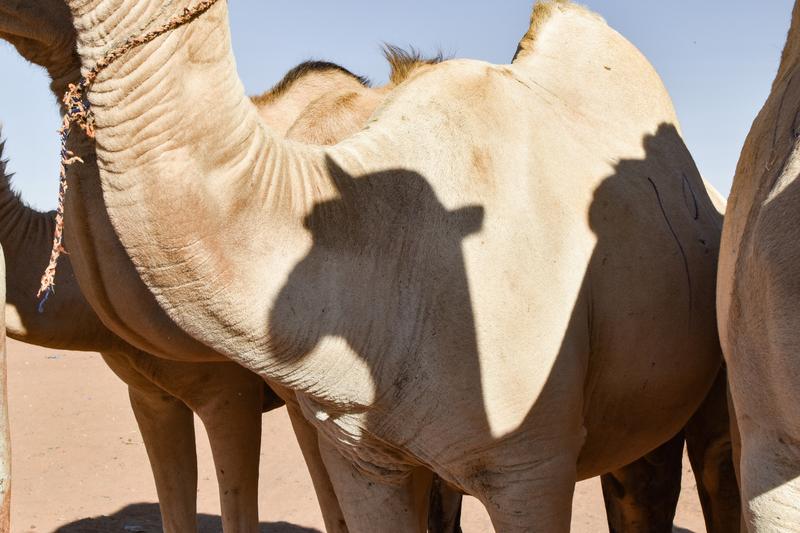
何薩姆:有些人能夠前往蘇丹或肯亞等其他國家。但對於大多數人來說,我們就困在衣索比亞和索馬利蘭的邊界,沒有任何進展。我們看到商人與貨物進進出出,咖啡被運進來,但我們困在這裡。
穆罕默德最近前往索馬利亞的邦特蘭地區,往更東邊12小時車程的距離。他離開相對安全的索馬利蘭。在前往邦特蘭的博薩索市路上,他不得不躲在小貨卡上的米袋裡。葉門人不能在索馬利蘭境內,或索馬利亞的其他地方自由行動。躲在卡車上,躲過軍警的檢查站,通常是旅行的唯一方式。
穆罕默德:這裡比索馬利蘭更危險。我聽說這個城市的某個地方發生爆炸,但我不清楚細節。很可怕。我離開索馬利蘭,是因為想去別的國家,任何國家都好。
對於何薩姆和他的家人來說,這種冒險之旅並不是個選項。
何薩姆:在索馬利蘭這裡也有很多問題。索馬利蘭與邦特蘭州之間有戰事,雙方有領土糾紛。畢竟索馬利蘭是脫離索馬利亞而獨立的一個部分,索馬利亞政府仍然宣稱它們擁有索馬利蘭的主權。
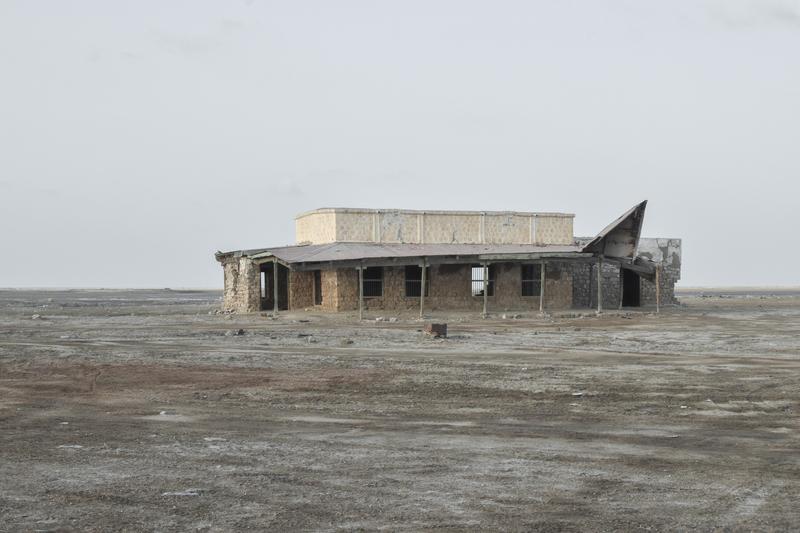
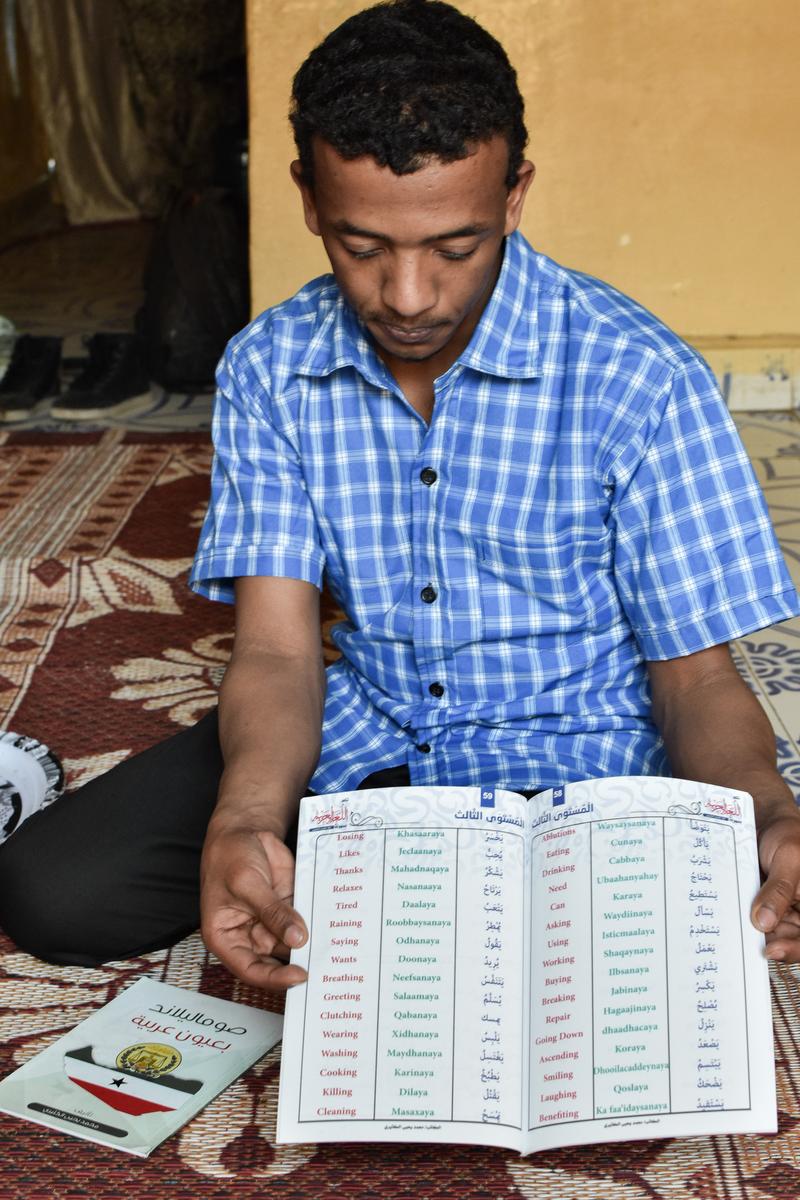
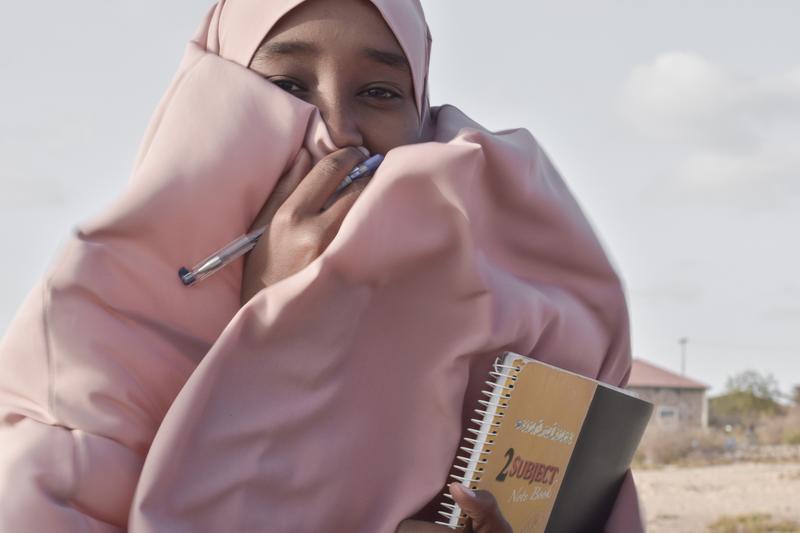
從歷史上來看,索馬利蘭與葉門之間有密切的關聯,尤其是亞丁市。這兩地都曾受英國統治,但文化聯繫能追溯到更久之前。近代,1986~1991年的索馬利亞內戰期間,約有數十萬索馬利亞人逃往索馬利蘭,而許多人在葉門逗留多年。有些人直到最近葉門局勢惡化時才返回家鄉。
何薩姆:1990年代索馬利蘭發生戰爭的期間,很多索馬利亞人曾經來到葉門。葉門曾經收容了150萬名索馬利亞難民。但是當葉門戰事爆發時,大多數人都回歸自己的家鄉。葉門人和索馬利亞人情同手足,但他們的生活容易多了。他們把孩子送去上學不會有困難。
儘管如此,葉門難民融入索馬利蘭社會的程度很低。大多數葉門人不會說索馬利語,只有少數人能把孩子送去上學。有人企圖在文化之間建立橋梁,例如,葉門難民獨力製作了一些雙語教科書。但某些群體之間局勢緊張,甚至是不同葉門難民族群之間也有緊張關係。
何薩姆:葉門的任何地方都不安全。這裡可能是安全的,但留在這裡沒有未來。例如,我來自北部地區的沙那,因此我不能住在亞丁。由於戰爭造成的仇恨,亞丁和南方的人不信任我們。
穆罕默德:我的國家曾經是一和平的國家,但是現在的情勢非常艱難。葉門有許多不同族群、文化和語言。它在阿拉伯世界很特殊。事實上,我個人能夠和我的國家裡的每一個人、每一種人共存。對所有葉門人來說,這就是葉門這個國家曾經的意義。
穆罕默德將盡其所能,盡快離開索馬利蘭、索馬利亞或非洲之角地區的任何地方。
穆罕默德:我有時會找到工作,很多都是非常累人的工作,但仍然負擔不起教育費用、甚至是生活必需事項。我已經待在索馬利亞兩年了。我決定掌握自己的未來。我計劃離開這個國家,也許前往南亞的某個地方。我可能可以去尼泊爾或印度。我希望在那裡生活會容易一點,希望能在那裡受教育。
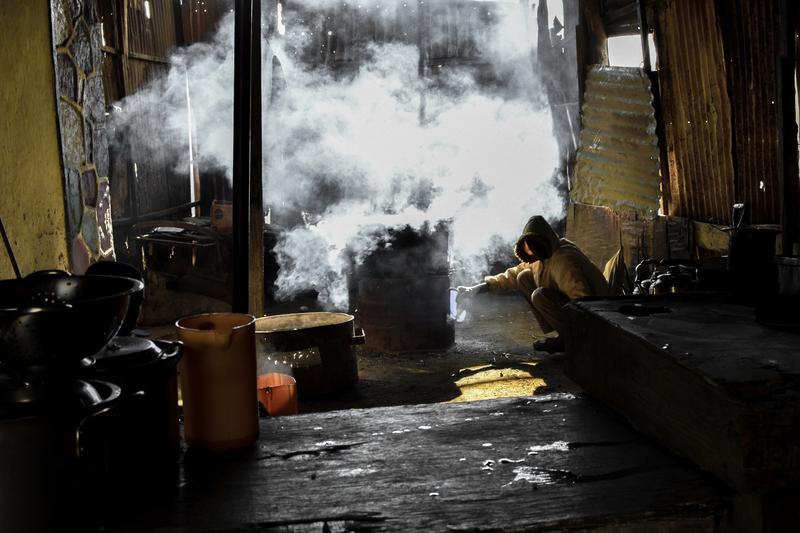
索馬利蘭並未提供讓難民在新國家、開始新生活的環境。雖然有許多在索馬利亞內戰中遭到遺棄的地方從未被重建,但索馬利蘭卻設法建立了一個民主政權,並為其人民提供安全保障。儘管經濟上面臨困難,但對於這個地處世界上最艱困、經濟上處於不利條件的地區,且沒有得到任何政府認可的國家來說,這是一項偉大的成就。對於葉門難民來說,它提供了些許安全,雖然他們未來的前景依然渺茫。
Since 2011, Hundreds of Thousands of people have died in armed conflicts in the Middle East, involving local governments and regular troops, international actors, rebel groups, and terrorist groups such as ISIS and Al-Qaeda. Many millions more have been displaced. Syrian refugees are the face of a multitude of conflicts and of the fate of civilian populations in war zones. The influx of Syrian refugees has changed the political landscape of Europe, which has been noticed around the world and as far away as in Taiwan.
While Syria is on everyone's map of the big contemporary tragedies of mankind, the war in Yemen is mostly faceless. Since the start of the war in 2014 Yemeni refugees simply don't have anywhere to go where their faces could be seen. The country is locked between some of the most hostile deserts in the world and next to Saudi Arabia, which directly involved in the armed conflict. The presence of Al-Qaeda and ISIS in the region is making a safe passage by land almost impossible.
In 2014 rebels from the northern part of Yemen, the “Houthis”, started an uprising in cities all over the country, they soon defeated the government of Adbrabbuh Mansur Hadi and since have controlled major cities and areas, mostly in the North of Yemen. The forces of the old government gathered in the South and with the help of air strikes by a foreign coalition led by Saudi Arabia, started fighting back the Houthis. In 2018, the war is still at a stalemate, and and a multitute of foreign actors, from Saudi Arabia and the USA to Iran are more or less officially involved.
The only possible place to go for Yemeni refugees is across the waters of the Indian ocean. Many Yemenis get stranded in the Horn of Africa region, in Djibouti or in Somalia, which itself is a failed state with several rivaling regimes in different regions. On my visit to Somaliland, the by far most stable and peaceful breakaway part of Somalia, I met Mohammed and Hossam, who had made the passage from Yemen by boat. After my visit, I had the chance to conduct a series of telephone interviews with them.
Hossam: In April 2015, we arrived by boat in the city of Berbera in Somaliland. We couldn’t endure to airstrikes by the Saudi Air Force anymore. It was a chaotic war in all regions of Yemen. We then moved to the next best place.
Mohammed: Few flights were going out but prices were astronomical. I had to go by boat from the city of Mukalla. I traveled there from my hometown Taiz, and I had to pass many Houthis’ military checkpoints on my way. The whole country was up and about and it was tense.
Small scale shipping in the waters in front of Yemen and Somaliland is mostly done by Indian and Pakistani traders. This part of the Indian Ocean/ Red Sea is still infamous for piracy, which mostly affects smaller and rather defenseless vessels. Taking this route takes courage for everyone involved.
Hossam: We got on a small boat. Me, my wife and my three children, we were part of the first group of 370 Yemeni refugees. Still today, there are some very small boats transporting livestock from Berbera to Aden or Mocha, and refugees come via these boats on their return trips. There aren't any boats that are meant for passengers.
While Hossam's whole family is with him, Mohammed's family is still in Taiz, a city in Yemen which has seen heavy combat. Their chance of leaving the country is slim. After taking the hazardous trip to one of the ports in Yemen, chances depend on the volumes of traded goods, as refugees mostly use commercial vessels for trading livestock. While I visited the port of Berbera, there were very little trading activities towards Yemen, and furthermore only to Aden, a city which many Yemenis cannot reach due to the front lines of the war. On the other side of the water, Somali fish traders were waiting for their own boats to come in.
Mohammed: I can’t reach out to my family. I stay in touch with some friends through Facebook occasionally, but for my family, I can’t talk to them. When I call on my family’s landline, I always get a message that the line is closed.
For many reasons the situation for Yemenis in Somaliland is desperate. The war has left them, and especially their children, traumatised and Somaliland offers them little relief.
Hossam: We didn't get any help from the UNHCR [United Nation's High Comissioner for Refugees] at first; no housing, no camps or refugee centers. It didn’t provide any assistance except issuing some donations of no more than 50 dollars, only to some people and for a limited period of time.
Mohammed: I need to go to university and I need someone to help me reach my family. That’s all. Many of my friends were jailed and tortured. In my case, I was lucky to be able to escape.
Even though most Yemenis in Somaliland have found shelter, staying in Somaliland for long is not an option for many. But then again, especially for families, such as the Al-Aklanis with 3 children, traveling further into Africa is dangerous and costly.
Hossam: There were some people who were able to leave for other countries such as Sudan or Kenya. But for most of us, at the border between Ethiopia and Somaliland, there is no going any further. We see the traders with their goods going in and out, all the coffee going in, but we are stuck here.
Mohammed has very recently made his way to the Puntland region of Somalia, a 12 hour drive further to the east. He has left the relative safety of Somaliland behind. On the way to Bosasso he had to hide among bags of rice on a pick-up truck. Yemenis cannot move freely inside Somaliland or elsewhere in Somalia. Hiding on trucks is often the only option to travel unrecognized by military and police checkposts.
Mohammed: The security here is worse than in Somaliland. I've heard there were explosions somewhere in the city, but I don't know much about it. Very scary. I left Somaliland, because I want to go to another country, any country.
For Hussam and his family, such a risky trip is not an option.
Hossam: There are also many problems here (in Somaliland). There is a war dwelling with the State of Puntland, with clashes in the border areas. At the end of the day, Somaliland is a breakaway part of Somalia, and the government in Somalia still claims Somaliland for itself.
Historically there have been strong ties between Somaliland and Yemen, especially with the city of Aden. Both territories once were under united British rule, but cultural ties date much further back. In modern times, during the Somali civil war between 1986 and 1991, some hundred thousand Somalis had fled Somaliland and many have stayed in Yemen for years. Some have returned very recently when the situation in Yemen worsened.
Hossam: Many Somalis used to come to Yemen during the war that was going on in Somaliland in the 1990ies. Yemen used to host 1,5 million Somali refugees. But when the war started in Yemen, most of these people returned to their homeland. The Yemeni Somalis are our Brothers and Sisters, but their life is much easier. They don't have problems sending their children to School.
Still, Yemeni refugees are very little integrated into Somaliland's society. Most Yemenis don't speak Somali and only few can admit their children to schools. There are attempts to build bridges between the cultures, there are for example some bi-lingual textbooks single-handedly produced by Yemeni refugees, but there are also tensions, even tensions between different groups of Yemeni refugees.
Hossam: At the end of the day, the situation is not safe, anywhere in Yemen. Here it is maybe safe, but there is no future. For instance, I am from the Northern regions, from Sana’a and because of that I cannot live in Aden. People from Aden and the South mistrust us because of the hatred created by the war.
Mohammed: My country used to be a country of peace but, these days, the situation is very difficult. There are many different people, cultures and languages in Yemen. It is special in the Arab world. In fact, I personally can coexist with everyone, with every kind of people in my country. This is what Yemen used to be for all Yemenis.
Mohammed will try what he can to not stay in Somaliland or Somalia or anywhere in the Horn of Africa Region much longer.
Mohammed: I sometimes found work, many very exhausting kinds of odd jobs, but still couldn't afford education or even the most necessary things. It has been 2 years now for me in Somalia. I decided to take my future in my own hands. My plan is to leave this country, maybe for somewhere in South Asia. Nepal or India might be places that I can reach. I hope life there will be a bit easier, I hope I can go back to education there.
Somaliland is far away from offering the circumstances for enthusiastically starting a new life in a new country. While many places abandoned in the Somali civil war have never been rebuilt, Somaliland has managed to establish a democratic regime and offer safety and security to its own people. Despite economic hardships, this is a great achievement for a country without being recognized by any other government, in one of the most troubled and economically disadvantaged regions in the world. For Yemeni refugees it offers some safety, but little prospect for the future.
深度求真 眾聲同行
獨立的精神,是自由思想的條件。獨立的媒體,才能守護公共領域,讓自由的討論和真相浮現。
在艱困的媒體環境,《報導者》堅持以非營利組織的模式投入公共領域的調查與深度報導。我們透過讀者的贊助支持來營運,不仰賴商業廣告置入,在獨立自主的前提下,穿梭在各項重要公共議題中。
今年是《報導者》成立十週年,請支持我們持續追蹤國內外新聞事件的真相,度過下一個十年的挑戰。

